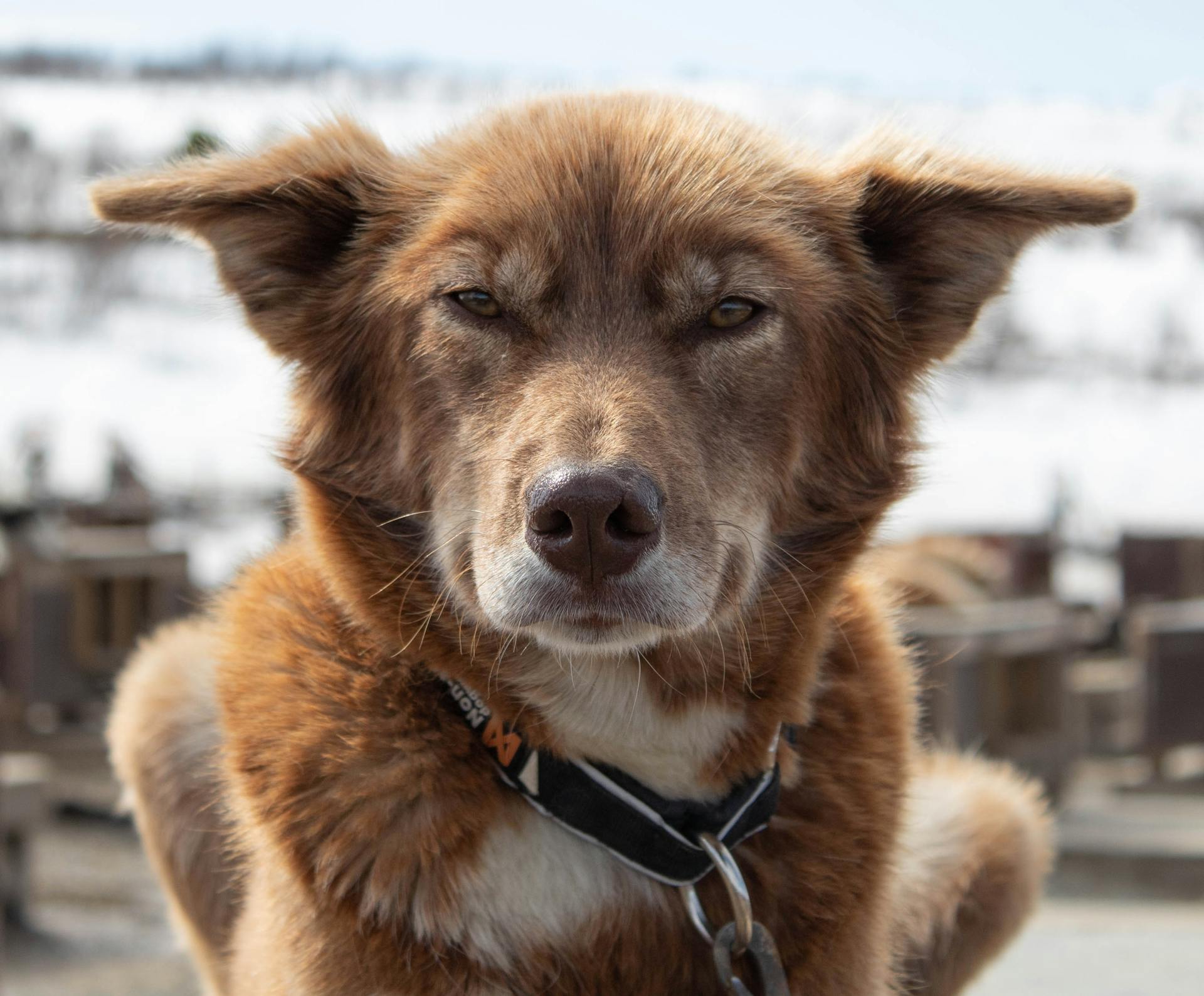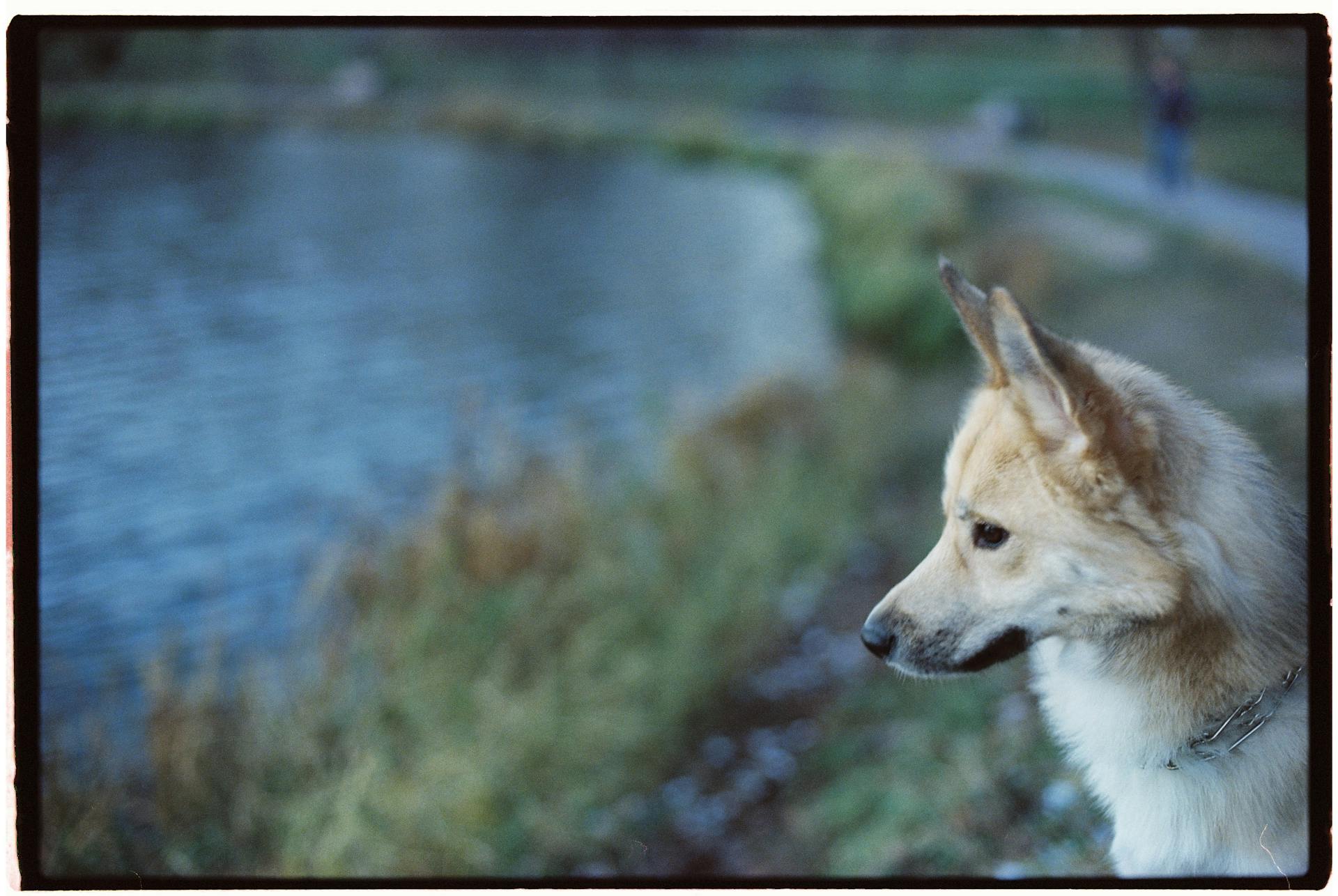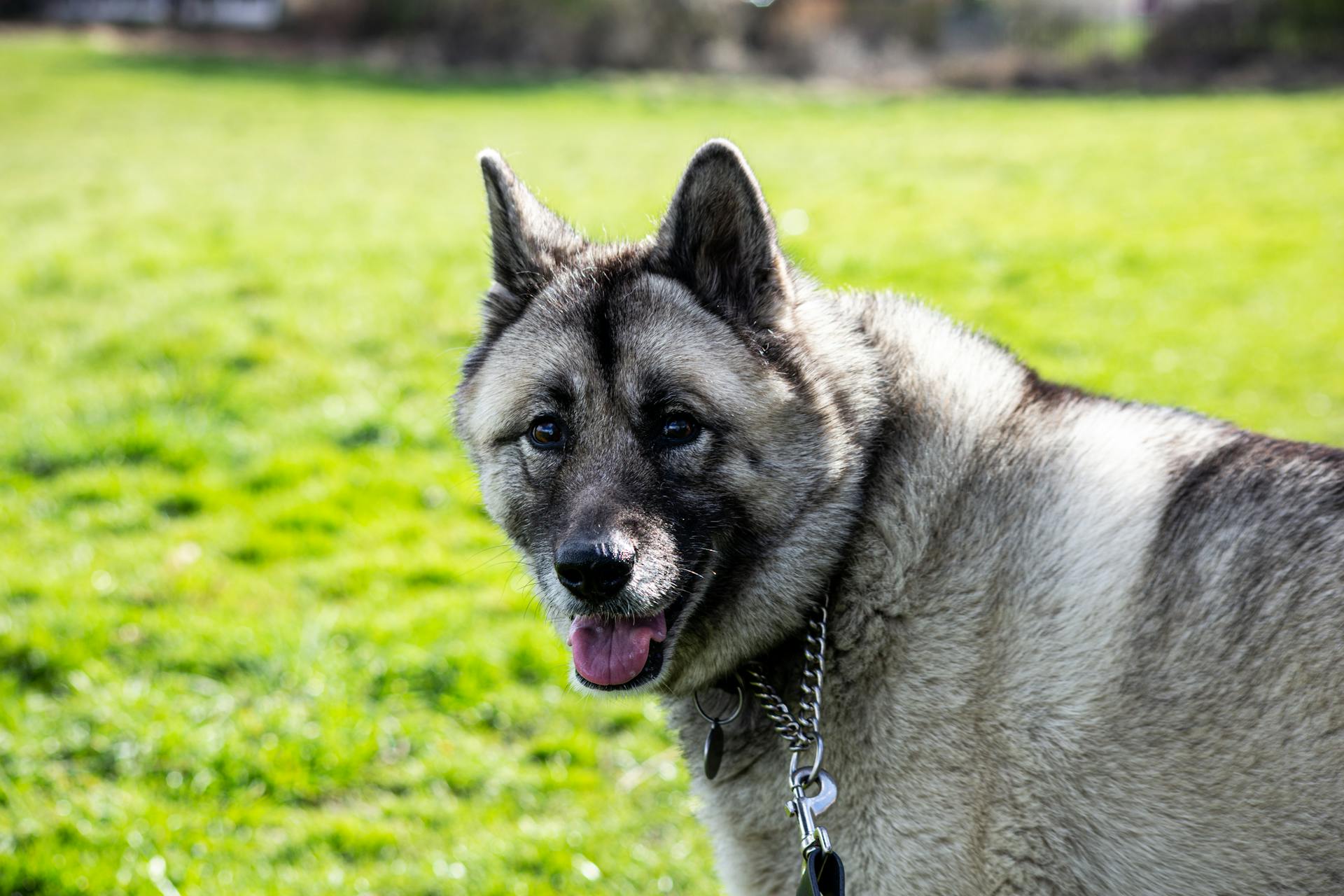
The Norwegian Buhund is a small to medium-sized dog breed that originated in Norway over 1,000 years ago. They were bred to herd sheep, cattle, and other livestock.
These energetic dogs are naturally athletic and love to stay active, requiring daily exercise to keep them happy and healthy. They have a short, dense coat that's easy to maintain.
In terms of size, Norwegian Buhunds typically weigh between 25-40 pounds and stand between 16-18 inches tall at the shoulder.
Temperament and Behavior
The Norwegian Buhund is a highly energetic breed that requires extensive exercise on a daily basis.
They love to expel their energy and can become destructive and ill-mannered if ignored or made to stay still frequently. This is why they need to be supervised, especially around children and the elderly.
They are extremely lovable and form strong bonds with their owners, which can result in aloof behavior and wariness or anxiety around strangers.
New owners may find this problematic, as the Norwegian Buhund may bark at each new alarming noise or movement.
They are highly intelligent and communicative, but can become bored easily and restless if they don't receive appropriate stimulus.
Daily exercise is required to keep them happy and healthy, and they thrive on activity and learning.
The Norwegian Buhund makes an excellent agility dog and is ideal for owners who can dedicate time to exercise and training.
They are not suitable for sedentary owners, but for those who live active lifestyles, they can be a fantastic companion.
With proper socialization, they usually get along great with kids and other family members, but they do require a lot of attention and exercise to prevent destructive behavior.
Recommended read: New Dog Breed Lancashire Heeler
Health and Care
The Norwegian Buhund is generally a healthy breed, but like many breeds, they can suffer from hereditary eye disorders and hip dysplasia.
Regular exercise is crucial for this breed, as they have a high energy level that requires significant daily exercise to stay happy and well-mannered at home. This can be achieved through activities such as running, playing fetch, or even just a long walk.
For your interest: How Much Exercise Do Border Collies Need
To prevent injuries, owners of dogs with Von Willebrand Disease should actively do their best to prevent injuries. This may involve being extra cautious during playtime or taking steps to prevent accidents.
Here are some common health issues associated with the Norwegian Buhund:
- Hip Dysplasia: a condition that causes a malformation in your dog's hip joints as they age, which may require corrective surgery.
- Cataracts: cloudy spots on your dog's eyes that can cause vision problems if untreated, and may require surgery to remove them.
- Von Willebrand Disease: a bleeding disorder that affects the blood's ability to clot properly.
Measurements
When considering the Buhund's physical presence, their size is a notable aspect. The Buhund ranges in size from about 43 to 45 centimeter (17 to 18 inches) tall.
Males are slightly taller than females, with a height range of 43–46 cm (17-181⁄2 in) for males and 44 cm (171⁄2 in) for females.
Their weight range is relatively consistent, with males weighing between 14–18 kg (31–40 pounds) and females weighing between 12–16 kg (26–35 pounds).
A unique perspective: Norwegian Buhund Colors
Health
The Norwegian Buhund is a relatively healthy breed, but like most purebred dogs, it can be susceptible to a few inherited health conditions.
Hip dysplasia is a common issue, causing a malformation in your dog's hip joints as they age, which may require corrective surgery in severe cases.
See what others are reading: Hip Problems in Border Collies

As with many breeds, the Norwegian Buhund can suffer from hereditary eye disorders, which can cause vision problems if left untreated.
Reputable breeders test prospective parent dogs for these issues before breeding them to avoid passing on these problems.
Here are some common health issues associated with this breed:
- Hip Dysplasia: This condition causes a malformation in your dog's hip joints as they age. Severe cases may require corrective surgery.
- Cataracts: Like humans, dogs can develop cataracts at different stages of life (typically in older age). These cloudy spots on your dog's eyes can cause vision problems if untreated, and in some cases, your veterinarian may recommend surgery to remove them.
- Von Willebrand Disease: This bleeding disorder affects the blood's ability to clot properly. Owners of dogs with Von Willebrand Disease should actively do their best to prevent injuries.
Forequarters
Forequarters are a crucial part of a dog's overall health, particularly in breeds with long bodies and short legs.
In Dachshunds, for example, the forequarters are prone to intervertebral disc disease due to their unique body shape.
Regular exercise, such as short walks and playtime, can help strengthen the muscles in the forequarters and improve mobility.
A study found that dogs that received regular exercise had less severe symptoms of intervertebral disc disease.
Grooming and Maintenance
The Norwegian Buhund's coat is relatively low maintenance, but it does require some regular grooming. They have a short to medium length coat that doesn't tangle or mat when shedding.
Brushing your Norwegian Buhund weekly is sufficient, but you may need to brush them more often during their seasonal shedding periods. Daily brushing is recommended during these times to remove loose undercoat.
They naturally repel dirt and stay relatively odorless, but brushing them several times a week can help reduce shedding. Brushing their teeth daily is also important to prevent dental infections.
Their nails should be trimmed regularly, and you should check their ears for waxy debris and clean them with a pet-safe ear cleaner as needed.
Coat
The Norwegian Buhund's coat is a double coat, consisting of a thick, hard outer coat and a soft, dense undercoat. This unique coat structure is a key part of the breed's natural, easy-care nature.
The outer coat is close lying, making it less prone to matting and tangling. However, it does shed moderately, especially during the heavy seasonal shedding periods known as "blowing coat."
Brushing your Norwegian Buhund several times a week can help reduce shedding, but daily brushing is recommended during these periods. This will help remove as much loose undercoat as possible.
The coat is typically longer on the neck, chest, and back of the thighs, giving the breed a distinctive appearance.
Body
The body of your furry friend is a crucial aspect of their overall health and well-being. A square-shaped body, measured from the top of the withers to the ground and from the prosternum to the buttocks, is ideal.
The chest of your pet should be deep, allowing for easy breathing and comfort. Well-sprung ribs are also essential, providing a strong and healthy foundation for their body.
A short, strong, and straight back and loin are key characteristics of a well-maintained body. This helps to distribute their weight evenly and prevents strain on their muscles and joints.
Tail
The tail is an essential part of a dog's overall appearance and can make or break their breed standard. Set high, firmly curled and carried over the center of the back, not too much to the side.
A well-groomed tail is crucial for making a good impression. Poorly curled tails can be a major fault.
A hanging tail is a clear indication of poor grooming. It's essential to get the tail right to avoid any deductions in the ring.
Frequently Asked Questions
What does Buhund mean in Norwegian?
The Norwegian words "bu" and "hund" translate to "homestead" or "farm" and "dog", respectively. The name Buhund literally means "homestead dog" in Norwegian.
What is the difference between a Norwegian Buhund and a Norwegian Lundehund?
The Norwegian Buhund has a denser coat and curly tail, giving it a more traditional spitz appearance, compared to the Lundehund. This difference sets the Buhund apart from its smaller, less common cousin.
Can a Norwegian Buhund be left alone?
Yes, a Norwegian Buhund can be left alone, but they still require daily exercise to prevent destructive behavior. They are independent enough to tolerate alone time during the day, but will thrive with regular attention and exercise.
Are Norwegian Buhunds rare?
Yes, Norwegian Buhunds are a rare breed, ranking 178 out of 199 recognized breeds in AKC popularity. Their rarity makes preservation breeding crucial to prevent their potential extinction.
Are Norwegian Buhunds aggressive?
No, Norwegian Buhunds are not naturally aggressive, but they may exhibit herding behavior around children and pets.
Featured Images: pexels.com

